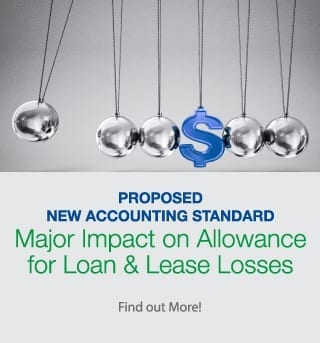PYA has released a new white paper that examines a Proposed Accounting Standards Update (PASU) and its implications for loan and lease losses.
PYA’s new white paper, “Proposed New Accounting Standard Would Have Major Impact on Allowance for Loan and Lease Losses,” studies an Accounting Standards Update (ASU) proposed by the Financial Accounting Standards Board (FASB) to improve accounting standards for financial instruments and credit losses. The paper provides an overview of and examines additions to the new model, offering guidance to help prepare entities for what these proposed changes could mean in terms of their financial assets and credit loss models, as well as considerations for the capital implications.
As stated in the paper, the Proposed Accounting Standard Update (PASU) was created “to provide financial statement users with more decision-useful information about the expected credit losses on financial assets held by a reporting entity,” thereby addressing major weaknesses in financial reporting previously identified by the Financial Crisis Advisory Group (FCAG). The proposed approach would replace the existing impairment approach in U.S. Generally Accepted Accounting Principles (GAAP) with a reliable measurement approach for financial assets.
According to white paper author Mike Shamblin, PYA Managing Principal of Audit & Assurance Services, “Given the major impact that this proposed accounting standard update would have on the allowance for loan and lease losses, it is important that entities are prepared. This white paper is designed to help entities navigate through the details of the proposed update, offering up factors for consideration now. Once the final guidance is issued, PYA can also assist organizations address its implications and implementation.”
PYA provides audit and accounting services to the financial services industry. This experience allows PYA’s auditors to quickly identify the financial reporting areas of greatest risk to an organization and to more efficiently and effectively perform audit and accounting services.


